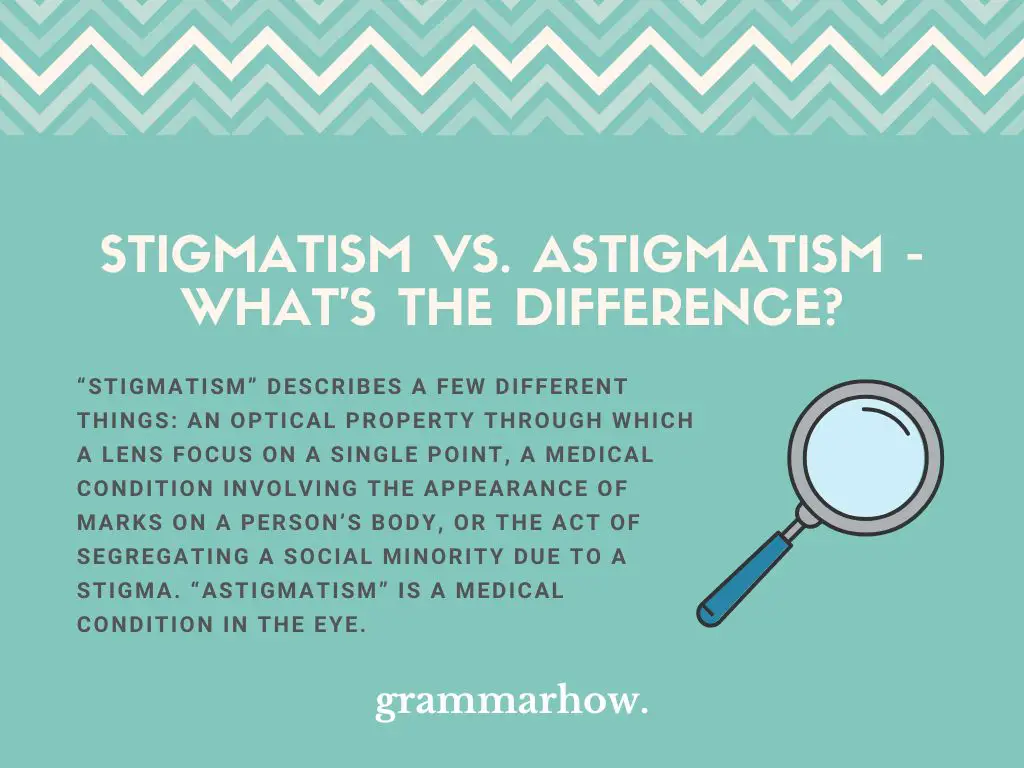In the realm of geometric optics, stigmatism ensures that a solitary point source in the object space is precisely focused into a singular point. Astigmatism is a common vision condition that occurs when the cornea or lens of the eye has an irregular shape, leading to blurred vision.
The terms "stigmatism" and "astigmatism" often raise questions and might even appear interchangeable at first glance. However, these words have distinct meanings and implications. Let's explore the meaning, differences, and usage of "stigmatism" and "astigmatism" to shed light on these commonly confused terms.
📷 Glimpse Meaning and Examples
📷 Perception Meaning and Examples
📷 Lenses vs. Lens
What does stigmatism mean?
"Stigmatism" describes an optical characteristic in ophthalmic systems where the focus occurs precisely at a single point in either the object space or the image space.
What does astigmatism mean?
"Astigmatism," on the other hand, is a term frequently encountered in optometry and ophthalmology. It is a common eye condition that affects the shape of the eye's lens or cornea. Astigmatism results in blurred or distorted vision because light entering the eye is not evenly focused on the retina. Instead, it creates multiple focal points, causing objects at various distances to appear blurry or stretched.
Examples of astigmatism usage:
- She visited the eye doctor because she was experiencing blurred vision, a common symptom of astigmatism.
- Astigmatism can be corrected with eyeglasses, contact lenses, or refractive surgery.
- John's astigmatism made it challenging for him to read without corrective lenses.
Synonyms for astigmatism:
- Eye condition
- Visual distortion
- Refractive error
- Focusing issue
Common Idioms/Phrases
- Blurred vision: A non-literal phrase used to describe confusion or lack of clarity in understanding a situation.
Discover more about the AI English proofreader, Engram!

Reference:














